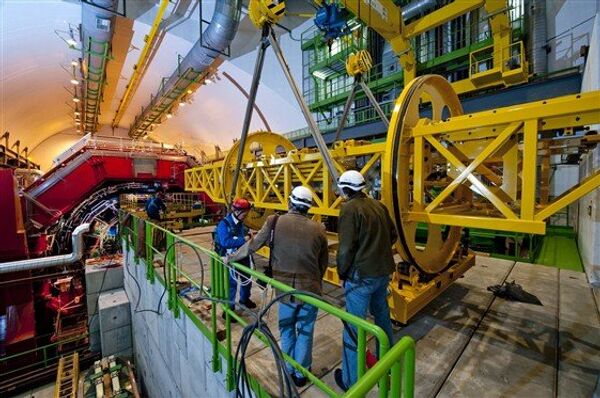MOSCOW, March 14 (RIA Novosti) - Researchers operating the Large Hadron Collider (LHC) particle accelerator confirmed on Thursday that a particle discovered in July 2012 is indeed the so-called Higgs boson, a key element in scientists' theories explaining the makeup of all the matter around us.
“The preliminary results with the full 2012 data set are magnificent and to me it is clear that we are dealing with a Higgs boson though we still have a long way to go to know what kind of Higgs boson it is,” Joe Incandela, a spokesman for the CMS experiment at the collider, said at a scientific conference in Geneva.
“It remains an open question, however, whether this is the Higgs boson of the Standard Model of particle physics, or possibly the lightest of several bosons predicted in some theories that go beyond the Standard Model,” said researchers at the European Organization for Nuclear Research, or CERN.
Scientists believe that the Higgs boson is the last discovered particle outlined by the Standard Model of particle physics, which explains the interaction of all subatomic particles. It is one of the fundamental theories of modern physics, which is why it is sometimes called “the theory of almost everything.”
More experiments and LHC data processing will follow to determine the full properties of the discovered particle, which is a daunting task considering that the detection of the boson is a very rare event – it takes around 1 trillion proton-proton collisions for each observed instance, according to CERN researchers.
The Large Hadron Collider, the world’s biggest particle accelerator launched in 2008, was built with the prime goal of either finding the Higgs boson, whose existence was predicted by British physicist Peter Higgs in the 1960s, or disproving it, possibly undermining the Standard Model.

